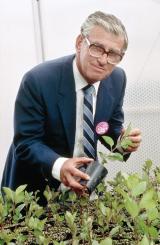Research supports the success of Western Australian horticulture businesses to meet the challenges that are impacting the productivity, profitability and sustainability of the industry, now and into the future. The challenges currently impacting the industry include productivity, climate variability, pest and diseases management, consumer trends and economic pressures.
Details of scholarship
The John Cripps horticulture scholarship (the scholarship) will fund a student to complete postgraduate study of a Doctor of Philosophy (PhD) or Master of Research on a project relevant to the WA horticultural industry.
The scholarship proposes over time to:
- develop talented candidates into researchers who can work in both industry and academic settings
- strengthen industry-focused innovation and development through greater collaboration between government, universities and industry
- support research projects co-designed between government, universities and industry.
The full-time postgraduate scholarship will provide a stipend of $50,000 per annum (tax exempt).
The total value of the scholarship is:
- PhD - $150,000 over 3 years
- Master of Research - $100,000 over 2 years.
The duration of the scholarship funding is for a PhD over 3 years or 2 years for a Master of Research. The scholarship funding is set for the periods outlined.
To increase the connection between research and industry, candidates must be based and undertake their studies at a WA university.
How to apply
Applications are now open.
Applications close midnight 28 January 2024.
Applications will not be able to be submitted outside this date and time.
To apply for this scholarship, applicants need to complete and submit an application via the DPIRD SmartyGrants platform.
Please review the scheme guidelines and FAQs before completing the application on the SmartyGrants platform.
All applications are assessed by a panel of industry and research representatives.
In assessing the applications, the panel will consider:
- relevance and feasibility of the proposed project
- applicants academic track record and
- a personal statement.
More information
Scholarship enquiries
Please review the scheme guidelines and FAQs which are attached as documents on the right hand side of this webpage.
For further information contact Vicki McAllister on 08 9368 3514.
About John Cripps and the Pink Lady® apple

John was born in the UK on 9 April 1927. He grew up in Steyning in Sussex and during the war grew fruit and vegetables to supplement food rations. John was intrigued that the Cox’s Orange Pippin apple tree in his garden had been created by crossing two other apple varieties, and this helped inspire his subsequent career path. At the age of 28 he took the bold step of emigrating alone to Australia to take a job with the Western Australian Department of Agriculture.
John was given permission in 1973 to begin the first apple breeding program in Western Australia. His aim was to combine Golden Delicious, and the firm, storable Lady Williams (a local variety). This required both patience and determination from John and his team of mainly women technicians: Crosses are made by hand pollinating, waiting until an apple develops, and then planting its pips to grow new seedlings. And because of an apple’s large genome, the chance of propagating fruit with the perfect combination was slim, so a total of 108,000 crossed seedlings were planted. By 1983, the trees were fruiting, and all had to be tasted, though many were inedible. However, the following spring John found one of the crosses had kept well over winter, retaining good appearance, taste, crispness and juiciness. This apple became the Cripps Pink variety.
In 1984, John Cripps selected what was to be named the Pink Lady® apple from an extensive breeding program in Western Australia.
Launched in 1991, Pink Lady® was the world’s first apple ‘brand’ and is grown across the world. It was John Cripps himself who came up with the name Pink Lady®. It is the pink gin cocktail drunk by the naval officer hero of his favourite novel, Nicholas Monsarrat’s The Cruel Sea, a story set during the Battle of the Atlantic in the Second World War when the navy ensured that the British did not starve.
Pink Lady® eating quality is assured through measures of firmness, sugar content (brix) and skin redness and only apples passing these tests are sold as the Pink Lady® (with the pink heart label). Apples not up to standard are sold as Cripps Pink, the variety name.
The apples contain the highest concentration of flavonoids grown. Flavonoids are natural chemical compounds found in plants, including apples, which are associated with health benefits. Testing a range of apples grown in Australia, researchers found the highest concentrations in Cripps Pink, mainly the skin.
